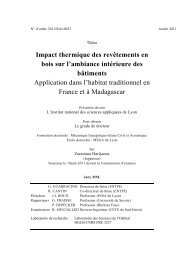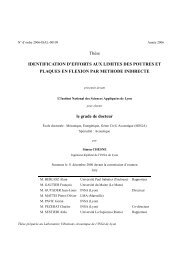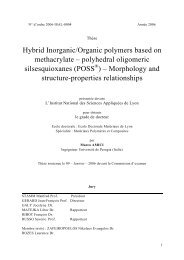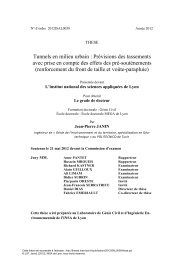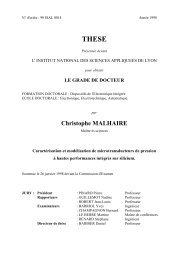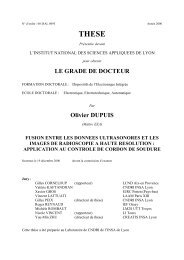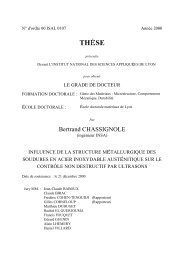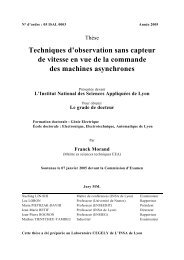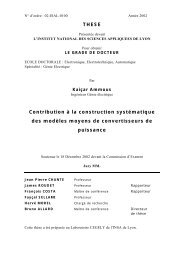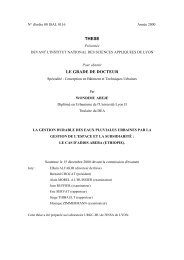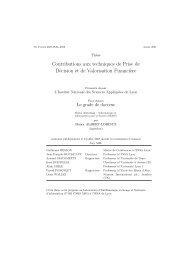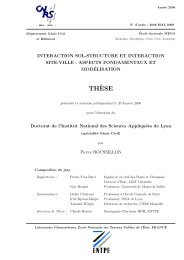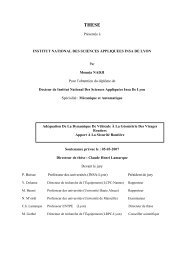Optimisation et modélisation du procédé de rotomoulage
Optimisation et modélisation du procédé de rotomoulage
Optimisation et modélisation du procédé de rotomoulage
You also want an ePaper? Increase the reach of your titles
YUMPU automatically turns print PDFs into web optimized ePapers that Google loves.
Partie A : Relations structure <strong>du</strong> matériau / <strong>procédé</strong> / propriétés finales<br />
30<br />
% en masse<br />
25<br />
20<br />
15<br />
10<br />
5<br />
0<br />
< 100 100-<br />
250<br />
250-<br />
400<br />
400-<br />
500<br />
500-<br />
630<br />
630-<br />
710<br />
710-<br />
800<br />
800-<br />
1000<br />
>1000<br />
taille <strong>de</strong>s particules (µm)<br />
Figure 9 : Analyse granulométrique pour C3<br />
% en masse<br />
60<br />
50<br />
40<br />
30<br />
20<br />
10<br />
0<br />
< 100 100-300 300-500 500-600 > 600<br />
taille <strong>de</strong>s particules (µm)<br />
Figure 10 : Analyse granulométrique pour C2a<br />
30<br />
25<br />
% en masse<br />
20<br />
15<br />
10<br />
5<br />
0<br />
< 212 212-400 400-600 600-800 800-<br />
1000<br />
1000-<br />
1180<br />
> 1180<br />
taille <strong>de</strong>s particules (µm)<br />
Figure 11 : Analyse granulométrique pour C2c<br />
Les figures (Figure 7 à Figure 11) perm<strong>et</strong>tent d’observer les différences entre la<br />
granulométrie <strong>de</strong>mandée initialement (confi<strong>de</strong>ntielle) <strong>et</strong> la granulométrie réelle obtenue.<br />
Pour les poudres <strong>de</strong> taille moyenne 500 µm, l’allure générale correspond à la <strong>de</strong>man<strong>de</strong>, mais<br />
la quantité <strong>de</strong> grosse particule est plus importante que celle <strong>de</strong>mandée. Par exemple, pour<br />
une taille <strong>de</strong> particules supérieure à 710 µm, le pourcentage <strong>de</strong>mandé était inférieur à 10 %.<br />
Or, pour les 3 gra<strong>de</strong>s, le pourcentage <strong>de</strong> particules <strong>de</strong> taille supérieure à 710 µm est <strong>de</strong> 12 %<br />
pour C1, 19 % pour C2 <strong>et</strong> 20 % pour C3.<br />
Cependant, pour notre étu<strong>de</strong>, nous pouvons considérer que la distribution granulométrique<br />
est i<strong>de</strong>ntique pour C1, C2b <strong>et</strong> C3.<br />
- 29 -



